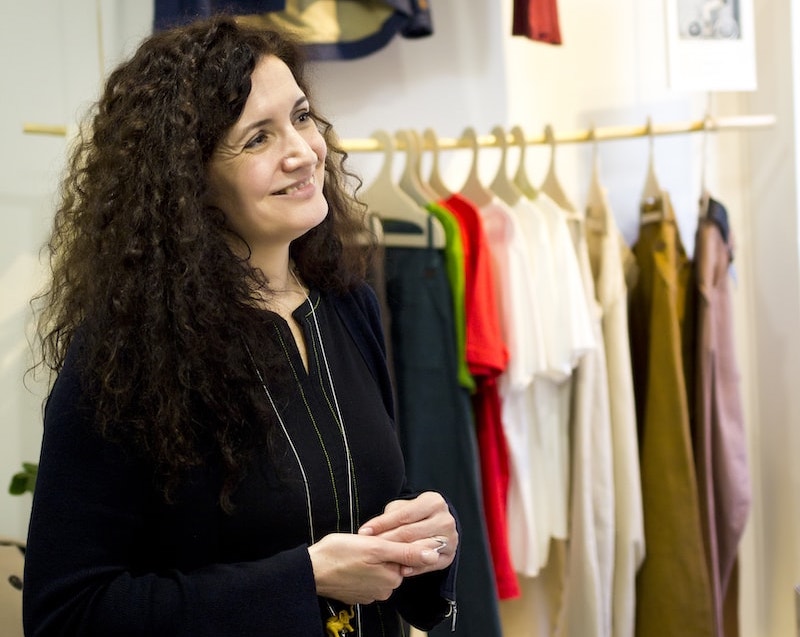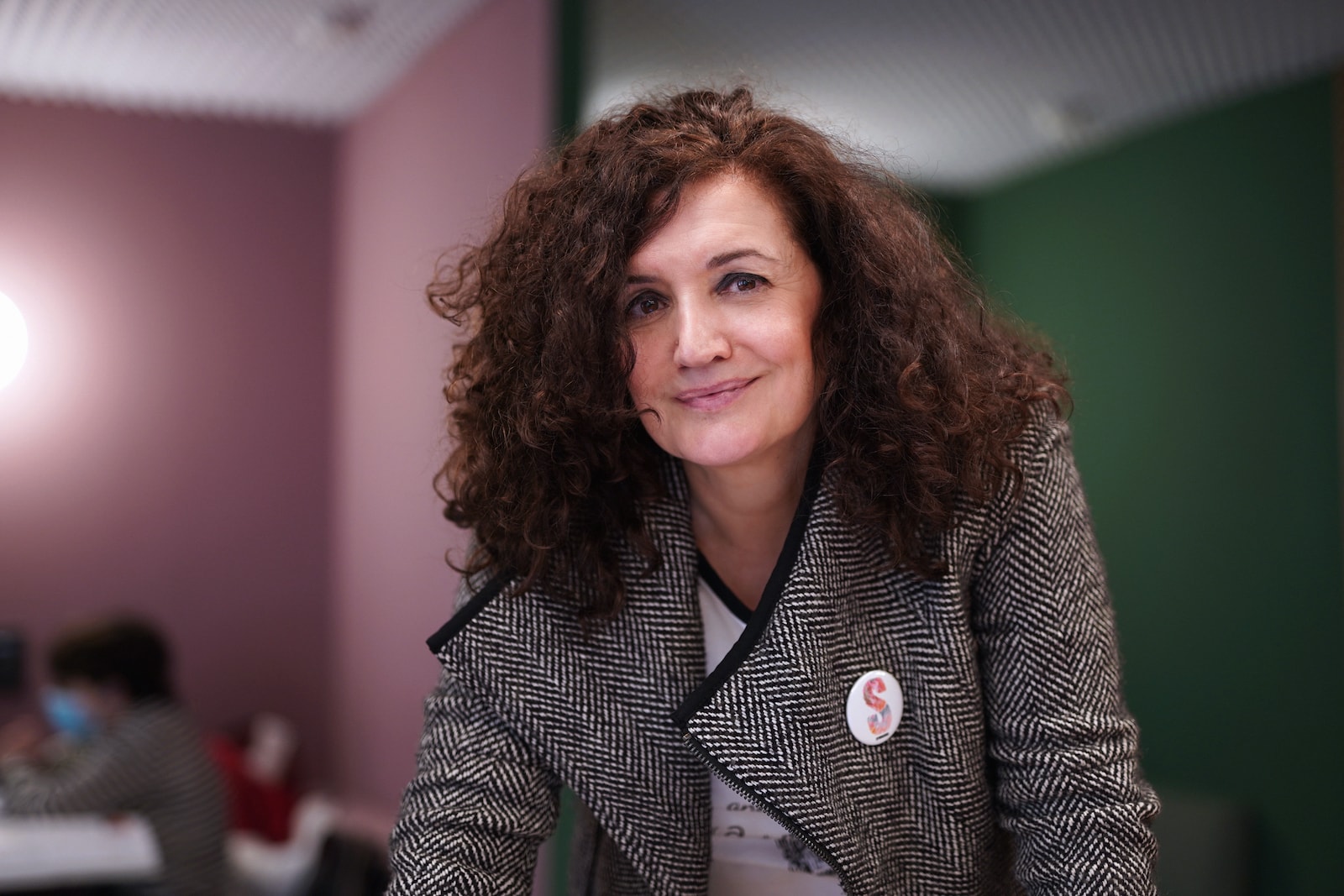Friday, February 10, 2023
Fast fashion is one of the most polluting industries on the planet, but the struggle of people like Paloma García López (CEO of The Circular Project) is key to consolidating sustainable and circular societies.
By Mauricio Hdez. Cervantes
It was her destiny from the beginning. Paloma García López's family comes from Béjar, a town in Salamanca with a long textile tradition, but her own mother’s story was her main inspiration to become a leader in the fight for sustainability in the fashion industry: she worked as a traditional dressmaker and had to continue practicing her trade when facing the widespread growth of seasonal clothing (imposed by large transnational chains) that broke into the market.
However, Paloma's initial years in the professional world were not in dressmaking, but as a journalist. After two decades in the industry, and after being laid off from a German telecommunications company, she decided to rethink the direction of her life, working on efforts that would not only fulfill her professionally, but also generate a positive impact, a real change in both society and the environment. The answer, without going any further, was The Circular Project, an initiative in the fashion world that is committed to circularity and the reuse of materials to reduce the impact this industry has on the environment, and, in this way, to contribute to the creation of a more cooperative society with less inequality that’s more in tune with the environment.
What is the difference between sustainable fashion and fast fashion?
Sustainable fashion is that which very clearly understands the impact the textile industry has on the planet, and all its processes are aimed at minimizing it. We're talking about sustainability in fashion when we firmly state that we do not want to compromise planetary resources for future generations. And for this very reason, and compared to conventional fashion, sustainable fashion is extremely rigorous. Our work prioritizes reducing energy consumption, reducing raw materials, etc. The positive impact we’re seeking to make is in the ecological, social and economic spheres.
What would have to happen for all fashion to be sustainable?
Well, a priori, it seems that our society is on the road to sustainability, but what would have to happen for all fashion to be sustainable? Well, we would all have to work with the same key concepts, understand that sustainability means consuming and producing less and better, as well as circularizing all processes. And it also means, as in nature, eliminating the concept of waste, i.e., achieving the reuse of all waste. It also means building a social project of regenerative economy to heal the damage that the years of a linear economy have caused to the planet.
"Every second a truckload of clothing is thrown away or incinerated, and only 1% is recycled."
But there’s no use in saying that we have to transform the textile sector when that implies a huge investment for the traditional industry. We’re talking about an exciting but very complex process, because many jobs and a significant investment are at stake in this transformation.
The textile industry is responsible for 20% of global water waste and pollution, what can manufacturers do to reduce their consumption and environmental impact?
They have to transform their processes towards low water consumption, do a lot of research, work with closed circuits, and take great care to ensure that pollutants or toxic elements are never dumped into our waterways. Right now there are already processes, and technological research, that do not use water at all. This is undoubtedly our greatest resource. And it’s not infinite. For this very reason, the textile industry has a lot to say and do in this regard.

What is upcycling?
It’s one of the most important techniques in the sustainable fashion industry. Basically, it consists of reusing any material that’s in good shape and capable of having a new use. It’s creativity at its best.
What role does technological innovation play in the transition to sustainability in fashion?
Right now, in the textile sector, technological innovation is a vital tool. Research, development, and technology, hand in hand, are key to caring for the planet. I’ve always said that we have to make the benefits of technology work in favor of our mother nature.
There’s still a long way to go in textile recycling; every second a truckload of clothing is thrown away or incinerated. And only 1% is recycled; that's very little. More research needs to be done on this, because we’ve manufactured enough clothing to wear for decades; there would be no need to manufacture more. So what do we do with all the textile waste we already have? Well, it could be an amazing raw material.
"We’ve manufactured enough clothing to wear for decades."
Textile innovation is on the path to search for new materials, developing applied circular economy techniques and new machinery that uses renewable energies. Another very important point is to innovate with respect to distribution models.
Despite this, fast fashion continues to be consumed, especially in developing countries. How could all this progress be better distributed in different regions of the world?
Right now, fast fashion and low-cost fashion are consumed worldwide. There aren’t many differences from one country to another. At the moment those of us in sustainable fashion are being impacted by a major standstill due to the war in Ukraine, the pandemic, and other geopolitical events. But even more serious is the case of ultra-fast fashion that has, like a virus, become part our economy, because it not only produces very quickly and very cheaply, but now, by selling online, it’s making and aggressive entrance and destroying market prices.
If we’re talking about the economy for the common good, what role does transparency play in knowing how a pair of pants or a T-shirt have been produced?
Transparency is one of the historical demands of sustainable, ethical, and circular fashion. We need the entire supply chain, and the life cycle of a garment, to be very well mapped and transparent. Transparency is essential for consumers. We have the right to know who, how, and under what conditions our clothes have been made.
"Consumers have the right to know what social and ecological impact clothing manufacturing has."
Why is there this need to update our wardrobe so often, why aren’t timeless garments promoted more?
As I said before, we have enough clothes to wear for 20 years. Even so, the racks of the big chains are updated every week. It’s ridiculous. Timeless clothing isn’t promoted because we’re facing very aggressive market laws. In addition, the fast fashion industry employs 26 million people and generates profits of 200 billion euros a year.
Right now, sustainability is based on local production and local consumption. What we should achieve is more exchange between different countries, regardless of the production location, and for this more cooperative, circular, and sustainable system to generate new jobs.
¿Te ha parecido interesante?





